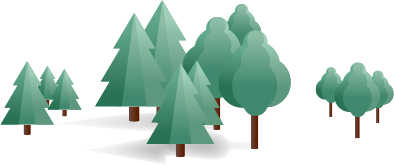WHAT IS GOING ON IN THE BIAŁOWIEŻA FOREST? – updates by LASY PAŃSTWOWE (POLAND)
On 13 July 2017, the European Commission decided to refer Poland to the EU’s Court of Justice for increased logging in the Białowieża Forest. The Commission also requested the Court for interim measures compelling Poland to suspend their work immediately.
EUSTAFOR’s Office in Brussels has observed an increasing interest in what is happening in the Bialowieża Forest. The summary below is based on the latest information about the current situation provided by the Polish State Forests (Lasy Państwowe).
The bark beetle infestation in the Białowieża Forest does not seem to be declining in spite of claims by some NGO activists. Already about 8% of trees, and not 5% as was previously assumed, have died in the Białowieża Forest, according to the estimates of scientists from the Forest Research Institute who are conducting the ForBioSensing project and the number of dead tree stands is increasing rapidly.
Foresters from Białowieża Forest District have claimed from the very beginning that the real problem is not the infestation itself but its scale, which is the largest since the 1920s. This scale can be observed in 170 pheromone insect traps installed in Białowieża Forest District, which is most affected by infestation. In 2015, these traps were filled with 155 liters of bark beetles, whereas in 2016 the number increased to 205 liters. This year until the beginning of May these traps were filled with 164 liters of insects.
In the past, all trees infested by bark beetles in the Białowieża Forest were logged, making it impossible for the infestation to spread. At that time, the situation was variable yet under control. Within the last five years, forest stands covering 7.2 thousand ha have died in three forest districts in the Białowieża Forest. A disaster on such a scale might be ignored in massive natural forest complexes, but not in the case of the relatively small complex of Białowieża Forest, which anyways remains under anthropogenic pressures.
The turnabout took place in 2012 when a new forest management plan (FMP) for three forest districts in the Białowieża Forest were implemented by the Ministry of the Environment, under pressure from non-governmental organizations. The new FMP radically limited the number of logged trees and excluded further areas from usage. This decision made it impossible for foresters to remove an appropriate number of attacked trees in order to prevent bark beetles from inhabiting still healthy trees.
In 2013, the volume of infected trees within the area of Białowieża Forest District equaled 55 thousand m3, subsequent estimates showed nearly 117 thousand m3, and in the following year almost 152 thousand m3. This precipitous increase continues until the present day.
Since the beginning of the massive infestation in 2012 until the end of April 2017, bark beetles attacked 834 thousand trees (about 1 million m3) in three forest districts in Białowieża Forest. The FMP allowed the removal of only slightly above 160 thousand trees within that same time period. Other portions of the forest were dying not because of the inefficiency of sanitation cuttings, but because of the lack of them.
Environmental organizations claim that now it is too late to fight bark beetles and that Białowieża Forest should be left without any intervention with a purpose to observe natural processes in the ecosystems. However, the state forest administration is obliged to strictly follow the provisions of national legal acts in their everyday management practices. These legal acts and compulsory rules include: the Forest Act, which makes forest district managers responsible for forests entrusted to them, forest management plans, which are consulted with the public (unchanged since 2012 in the case of Browsk and Hajnówka forest districts), the Natura 2000 protection plan for Białowieża Forest, numerous legislative acts on public safety, fire prevention, etc.
Following these directives, the three forest districts are obliged to remove all those dead spruce trees which are located by roads and trails posing a threat to tourists and increasing the risk of fires within all forest stands regardless of age class. Occasionally, the trees of other species (e.g. those damaged by bending spruces, hanging above the roads) may also be removed. Each time such trees are marked on the spot by local foresters. Fallen dead wood is left in the forest to decay naturally.
There are various possible scenarios for Białowieża Forest. However, before taking any action, one should try to anticipate what impact the chosen scenario will have on the forest and on local people who live in them. Who will implement these decisions and who will take over responsibility for the final results? These questions are never asked by current campaigners or by the media. Consequently, dilemmas such as this one remain unclear in the minds of citizens.
The full version is available at http://www.lasy.gov.pl/information/news/what-is-happening-in-the-bialowieza-forest-right-now
Other relevant information is available under this link: http://www.lasy.gov.pl/information/all-about-bialowieza-forest
NOTE: The above summary is based on materials provided by the Polish State Forests (Lasy Państwowe). The views and opinions expressed therein are those of Lasy Państwowe and do not necessarily reflect the official policy or position of EUSTAFOR.
Published 28/07/2017, Warsaw/Brussels
Mr. Jerzy Fijas
Deputy Director General
Mr. Piotr Borkowski
Executive Director
- piotr.borkowski@eustafor.eu
- +32 (0) 474 989 319

